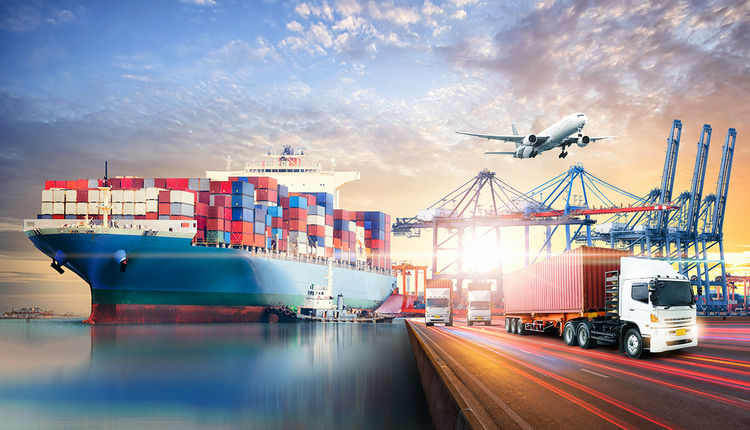Global economies should continue to recover after one of the sharpest economic contractions in recent history, but risks remain. Our Morgan Stanley economics team believes the 2Q downturn catalyzed by COVID-19 should mark the beginning of a new global economic cycle. Indeed, by almost any measure, the 2Q contraction was one of the sharpest and most severe in memory: US GDP fell at a 32.9% annualized rate in 2Q (a record), Global PMIs fell to 39.7 in April (near Great Financial Crisis levels), US nonfarm payrolls fell by over 20mm in April (another record), and South Korea exports fell nearly 26% in April (the lowest level since 2009). However, the recovery has been almost as swift. This has been helped by quick global policy action that has seen global policy rates decline by ~80bp to a new low of 1.44%, balance sheet expansion that has been more aggressive than we saw in 2008 for both the ECB and the Fed, and fiscal deficits at the G4/China that are on track to reach new highs. Policy support and the boost from re-openings have driven a V-shaped recovery in many of those key indicators. Already we have seen Global PMIs return to expansion territory, coming in at 50.3 in July; nonfarm payrolls rise by 1.763mm in the same month; US retail sales return to y/y growth in June; and Morgan Stanley’s proprietary CAPMI index (which typically leads ISM by one to three months) recover to expansion territory in July. While the speed of recovery likely moderates from here, Morgan Stanley’s economics team continues to forecast a V-shaped recovery, with 2Q marking the bottom and global output returning to pre COVID-19 levels by 4Q of this year. However, despite the already-made progress and encouraging signs of continued growth, there are a number of risks that shouldn’t be entirely discounted. Most notably, those risks include a “second wave” and an associated shutdown like we saw earlier this year, as well as geopolitical risk (including social unrest in various parts of the globe) and the upcoming US election.
US Shipper Macro Outlook
US shipper macro outlook has improved off the low watermark last quarter, but we expect the recovery to look different across the various transportation modes. In our latest shipper survey, shippers’ overall macro outlook recovered from the near-financial crisis levels we saw in our previous iteration. Interestingly, our survey also saw shippers' inventory levels experience the sharpest decline in at least a decade while the need to increase inventory is at the highest level in that same period and net ordering levels also fell sharply to lows seen in past mini-recessions (2011, 2015, 2019). As such, it appears to us that shippers need to restock but are unable/unwilling to do so – which could signal a potential restocking boom to come. However, we do not expect all transportation modes to participate equally in the recovery. As we look forward to the back half of the year and even into 2021, Trucking is likely to stay very robust and gain steam through year-end while Rail and IM will continue to be more sluggish in their recovery. The trucking market recovery is already well under way, with Morgan Stanley’s Truckload Freight Index (TLFI), which has been a benchmark of truck market conditions for the last 20 years, consistently outperforming seasonality in recent weeks and, more importantly, continuing to increase despite seasonal trends indicating the index would begin declining after the Fourth of July. Demand should continue to recover, but supply is unlikely to meet that demand given headwinds from increasing insurance rates (small carriers seeing up to 75-100% premium increases), the Drug & Alcohol Clearinghouse (which has seen over 25k violations in the first six months), and subdued OEM production. Despite spot rates now at the highest level since July 2018 (which was one of the strongest trucking markets on record), supply constraints plus pent-up demand should support further tightening in trucking and could even result in an unprecedented degree of tightness. At the other end of the spectrum, we see Rails as the most challenged given their high industrials/bulk commodity end-market exposure, which came under the most pressure during the shutdowns and which has been slow to recover. Indeed, commodity carloads are still down high-teens % y/y, only small recovery from down ~25% in 2Q. Meanwhile, Intermodal could lose out to more competitive trucks given the need for expedited freight to replace extremely low inventories. In addition to shippers’ need for speed, service, and shorter LoH, the JOC’s Intermodal Savings Index shows that the IM and TL price gap continued to close in 2Q, only increasing the attractiveness of switching.
The New Normal
As we move into a “new normal” in 2021, there will be some headwinds and some opportunities. COVID-19 has driven a sharp increase in e-commerce that we believe will be sustainable as previous hold-outs, both customers (older populations) and end markets (grocery), experience the benefits of e-commerce. We see the impact of e-commerce growth across nearly all components of the supply chain with Parcel carriers and Trucking players as the key impacted players. Volumes at Parcel incumbents have already seen a significant increase, but we’ve yet to see evidence this will be supported by pricing power. In a recent COVID-19 survey, only 17% of respondents said that they were willing to pay more for shipping now than before (and this survey was conducted at the end of March, at the peak of the lockdowns). Mix is likely to be a significant issue as the incremental e-commerce demand is coming from consumer staples and grocery rather than discretionary categories and from large shippers rather than SMBs (so far). At the same time, the stress on the network from a peak-like surge in volumes will likely drive additional capital investments (especially if the need for “clean” delivery becomes a structural requirement as we suspect). On the other hand, we believe multiple post COVID-19 trends will be drivers of TL share gains as supply chains are refilled and ship-from-store picks up momentum.















